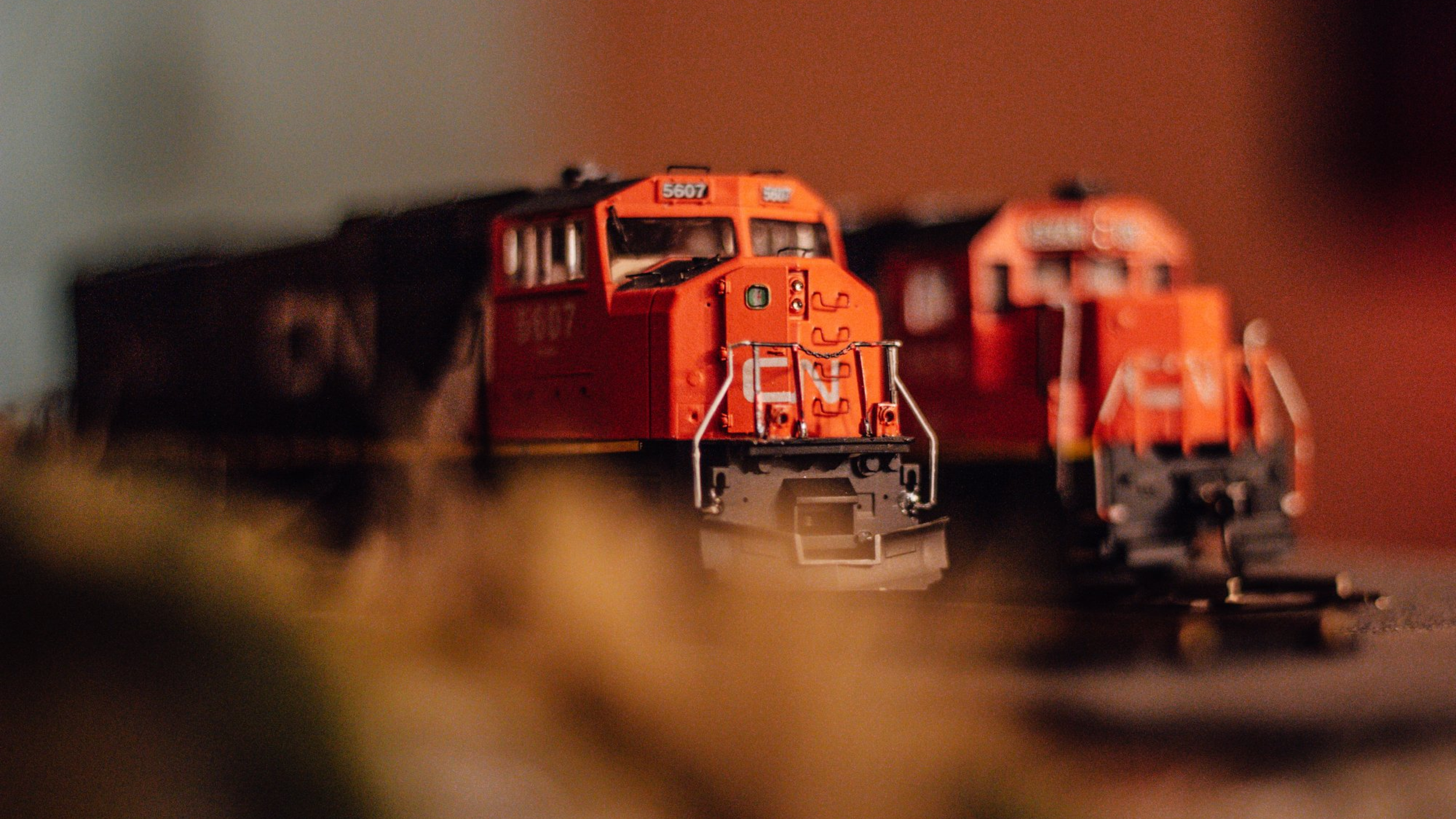CN Rail Detector Technology Initiative
Building the foundation for smarter, safer, and more connected rail operations
ROLE
DURATION
UX Lead
Five Months
CONTRIBUTION
TEAM
Research Planning
Design Workshops
Journey Mapping
Insight Synthesis
Data Mapping
Early Wireframes
Project Leads
Project Manager
Mechanical Engineers
Data Scientists
Rail Traffic Controllers
Tech Architects
Modernizing Rail Through Data
CN Rail set out to overhaul how it tracks the health of its trains. With detectors lining thousands of miles of track, there was massive potential for real-time insight. However, siloed systems, delayed alerts, and inconsistent data matching made it hard to act confidently or quickly.
As the UX Lead, I led discovery—uncovering how data moved (or didn't), where workflows broke down, and what people needed to do their jobs better.
Discovery
Project Objective & Impact
The goal is to integrate data to improve Safety, Predictive Maintenance, and Efficiency, shaping discovery, guiding prioritization, and helping frame a phased roadmap that addresses user needs and business outcomes.
What Was Heard
Over 15 hours of interviews with rail traffic controllers, mechanical supervisors, data scientists, and tech leads revealed common threads, highlighting technical frustrations, operational risks, inefficiencies, and lost time.
Concept
Mapping the Data Journey
To turn insights into strategy, I worked with stakeholders to map the full detector data lifecycle—from AEI scans to field alerts, inspections, repairs, and billing.
Data Journey Map
Six key breakdowns:
1. Train Consist
AEI data wasn’t updated mid-route. Offline syncing caused lag, and load weights couldn’t be tied to assets.
2. Detectors
Axle counts and car-end IDs were often wrong. Some data still came from tape reviews.
3. Alert / Notify
Detector alerts (WHN, HBD) arrived late. Teams had no shared visibility.
4. Analyze / Decide
Matching train/car IDs took 15+ minutes. If it failed, the alert was discarded.
5. Inspect / Repair
Crews didn’t know the problem until the car showed up. Tablets failed in low-connectivity zones.
6. Billing
The SAP and CRB systems were out of sync. The handoff between repair and billing was broken.
Understanding the Data Landscape
What data do we need? Where does it live? Can we trust it?
We mapped key systems—AEI, WISE, SAP, Railinc—and looked deeper:
Which failures matter most?
How do seasonality, asset age, or repair history affect risk?
Where are data gaps hurting decisions?
We connected data points to decisions, pinpointing where misalignment led to missed opportunities.
In the end, CN Rail didn't need more dashboards; they needed an integrated platform to deliver verified, real-time insights when it mattered.
Refinement
Asking the Right Questions
Turning pain points into “How Might We” prompts to focus our workshops and align everyone around what matters and the right problems to solve.
From Data to Decisions: Real-World Use Cases
We mapped use cases to assist stakeholders in understanding how the system influences daily decision-making to help stakeholders see its shift from reactive to predictive.
Building Contextual Interfaces
We identified shared priorities and translated key concepts into actionable workflows and interfaces from three user perspectives.
Design Principles
Based on these views, establish key design pillars to guide the wireframing process.
Wireframe Highlights
Developed initial workflows to test how this logic would function in real-world scenarios. These wireframes assisted everyone, from rail traffic controllers to architects, in understanding what the system could achieve.
SYSTEM-LEVEL ALERTS
Track alerts by location, severity, and team ownership
YARD COORDINATION
View staffing needs, part inventory, and open work orders
TRAIN & CAR DRILLDOWN
See alert history, recommended actions, and confidence scores
PREDICTIVE INSIGHTS
Forecast component risks before they escalate
Solution
A Roadmap to Make It Real
Once the vision was clear, we delivered a four-phase implementation roadmap to guide technical and design planning.
The Four Phases
Phase 1: Data Exploration
Root-cause analysis of matching issues, feasibility testing for predictive models, and early architecture planning.
Phase 2: Preventive Implementation
Data repository build-out, UI development, and integration fixes—running alongside legacy systems.
Phase 3: Predictive Intelligence
Model development for failure prediction, alert scoring, and detector health tracking.
Phase 4: Stabilization & Scalability
Device testing, Railinc integration, and long-term roadmap planning.
What We Delivered
A user-centered system strategy bridging operations, data science, and engineering
Lo-fi prototypes that aligned teams and informed testing
Clear data architecture recommendations
A phased roadmap for scalable implementation
Final Takeaway
This project wasn't just about designing dashboards; it was about helping teams use data more effectively to bridge gaps between people, tools, and decisions.
Focusing on real workflows and surfacing timely information, we created a foundation for predictive maintenance that aligns engineering, operations, and strategy, leading to smarter rail operations.































